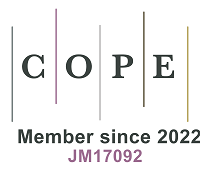REFERENCES
1. US EPA. Navigation panel to PFAS structure lists. Available from: https://comptox.epa.gov/dashboard/chemical-lists/PFASSTRUCT. [Last accessed on 22 May 2024].
2. ATSDR. Agency for Toxic Substances and Disease Registry. Toxicological profile for perfluoroalkyls. 2021. Available from: https://www.atsdr.cdc.gov/toxprofiles/tp200.pdf. [Last accessed on 22 May 2024].
3. Minnesota Department of Health. PFAS and health. Available from: https://www.health.state.mn.us/communities/environment/hazardous/topics/pfashealth.html. [Last accessed on 22 May 2024].
4. Agency for Toxic Substances and Disease Registry (ATSDR). PFAS in the U.S. population. 2023. Available from: https://www.atsdr.cdc.gov/pfas/docs/PFAS-and-the-US-Population-FS-H.pdf. [Last accessed on 11 Jun 2024].
5. Cariou R, Veyrand B, Yamada A, et al. Perfluoroalkyl acid (PFAA) levels and profiles in breast milk, maternal and cord serum of French women and their newborns. Environ Int 2015;84:71-81.
6. Fromme H, Mosch C, Morovitz M, et al. Pre- and postnatal exposure to perfluorinated compounds (PFCs). Environ Sci Technol 2010;44:7123-9.
7. Haug LS, Huber S, Becher G, Thomsen C. Characterisation of human exposure pathways to perfluorinated compounds--comparing exposure estimates with biomarkers of exposure. Environ Int 2011;37:687-93.
8. Liu J, Li J, Liu Y, et al. Comparison on gestation and lactation exposure of perfluorinated compounds for newborns. Environ Int 2011;37:1206-12.
9. LaKind JS, Naiman J, Verner MA, Lévêque L, Fenton S. Per- and polyfluoroalkyl substances (PFAS) in breast milk and infant formula: A global issue. Environ Res 2023;219:115042.
10. Pizzurro DM, Seeley M, Kerper LE, Beck BD. Interspecies differences in perfluoroalkyl substances (PFAS) toxicokinetics and application to health-based criteria. Regul Toxicol Pharmacol 2019;106:239-50.
11. Gyllenhammar I, Benskin JP, Sandblom O, et al. Perfluoroalkyl acids (PFAAs) in serum from 2-4-month-old infants: influence of maternal serum concentration, gestational age, breast-feeding, and contaminated drinking water. Environ Sci Technol 2018;52:7101-10.
12. Minnesota Department of Health. Statement of need and reasonableness (SONAR): proposed rules relating to health risk limits of groundwater, Minnesota. 2008. Available from: https://www.leg.mn.gov/archive/sonar/SONAR-03733.pdf#page=2. [Last accessed on 22 May 2024].
13. Minnesota Department of Health. History of MDH activities - per- and polyfluoroalkyl substances (PFAS). 2024. Available from: https://www.health.state.mn.us/communities/environment/hazardous/topics/history.html. [Last accessed on 22 May 2024].
14. Minnesota Department of Health. Human health-based water guidance table. 2024. Available from: https://www.health.state.mn.us/communities/environment/risk/guidance/gw/table.html. [Last accessed on 22 May 2024].
15. Goeden HM, Greene CW, Jacobus JA. A transgenerational toxicokinetic model and its use in derivation of Minnesota PFOA water guidance. J Expo Sci Environ Epidemiol 2019;29:183-95.
16. Gyllenhammar I, Benskin JP, Sandblom O, et al. Perfluoroalkyl acids (PFAAs) in Children’s serum and contribution from PFAA-contaminated drinking water. Environ Sci Technol 2019;53:11447-57.
17. Mondal D, Lopez-Espinosa MJ, Armstrong B, Stein CR, Fletcher T. Relationships of perfluorooctanoate and perfluorooctane sulfonate serum concentrations between mother-child pairs in a population with perfluorooctanoate exposure from drinking water. Environ Health Perspect 2012;120:752-7.
18. Minnesota Department of Health. Toxicological summary for: perfluorooctanoate. 2024. Available from: https://www.health.state.mn.us/communities/environment/risk/docs/guidance/gw/pfoa2024.pdf. [Last accessed on 22 May 2024].
19. Minnesota Department of Health. Toxicological summary for: perfluorooctane sulfonate. 2024. Available from: https://www.health.state.mn.us/communities/environment/risk/docs/guidance/gw/pfos.pdf. [Last accessed on 22 May 2024].
20. Greene CW, Bogdan AR, Goeden HM. A revised and improved toxicokinetic model to simulate serum concentrations of bioaccumulative PFAS. J Environ Expo Assess 2024;3:12.
21. LaKind JS. Invited perspective: PFAS in breast milk and infant formula-it’s time to start monitoring. Environ Health Perspect 2023;131:31301.
22. Minnesota Department of Health. WIC Program. 2024. Available from: https://www.health.state.mn.us/people/wic. [Last accessed on 22 May 2024].
23. Criswell RL, Wang Y, Christensen B, et al. Concentrations of per- and polyfluoroalkyl substances in paired maternal plasma and human milk in the New Hampshire birth cohort. Environ Sci Technol 2023;57:463-72.
24. Li Y, Andersson A, Xu Y, et al. Determinants of serum half-lives for linear and branched perfluoroalkyl substances after long-term high exposure - a study in Ronneby, Sweden. Environ Int 2022;163:107198.
25. US EPA. EPA’s exposure factors handbook (EFH). Available from: https://www.epa.gov/expobox/about-exposure-factors-handbook. [Last accessed on 22 May 2024].
26. California Office of Environmental Health Hazard Assessment. Perfluoroocatnoic acid (PFOA) and perfluorooctane sulfonic acid (PFOS) in drinking water. 2024. Available from: https://oehha.ca.gov/water/report/perfluorooctanoic-acid-pfoa-and-perfluorooctane-sulfonic-acid-pfos-drinking-water. [Last accessed on 22 May 2024].
27. University of Maine. Cooperative extension: livestock. PFAS and dairy animals. Available from: https://extension.umaine.edu/livestock/dairy/pfas-and-dairy-animals/. [Last accessed on 22 May 2024].
28. Kowalczyk J, Ehlers S, Oberhausen A, et al. Absorption, distribution, and milk secretion of the perfluoroalkyl acids PFBS, PFHxS, PFOS, and PFOA by dairy cows fed naturally contaminated feed. J Agric Food Chem 2013;61:2903-12.
29. van Asselt ED, Kowalczyk J, van Eijkeren JCH, et al. Transfer of perfluorooctane sulfonic acid (PFOS) from contaminated feed to dairy milk. Food Chem 2013;141:1489-95.
30. Andrews DQ, Naidenko OV. Population-wide exposure to per- and polyfluoroalkyl substances from drinking water in the United States. Environ Sci Technol Lett 2020;7:931-6.
31. ECOS paper: processes and considerations for setting state PFAS standards, 2023 update. Available from: https://www.ecos.org/documents/ecos-paper-processes-and-considerations-for-setting-state-pfas-standards-2023-update/. [Last accessed on 22 May 2024]
32. ITRC. PFAS Fact sheets: PFAS water and soil values table excel file. Available from: https://pfas-1.itrcweb.org/fact-sheets/. [Last accessed on 11 Jun 2024].
33. US EPA. Final PFAS national primary drinking water regulation. Available from: https://www.epa.gov/sdwa/and-polyfluoroalkyl-substances-pfas. [Last accessed on 22 May 2024].
34. Midasch O, Drexler H, Hart N, Beckmann MW, Angerer J. Transplacental exposure of neonates to perfluorooctanesulfonate and perfluorooctanoate: a pilot study. Int Arch Occup Environ Health 2007;80:643-8.
35. Beesoon S, Webster GM, Shoeib M, Harner T, Benskin JP, Martin JW. Isomer profiles of perfluorochemicals in matched maternal, cord, and house dust samples: manufacturing sources and transplacental transfer. Environ Health Perspect 2011;119:1659-64.
36. Lee YJ, Kim MK, Bae J, Yang JH. Concentrations of perfluoroalkyl compounds in maternal and umbilical cord sera and birth outcomes in Korea. Chemosphere 2013;90:1603-9.
37. Centers for Disease Control and Prevention. Biomonitoring data tables for environmental chemicals. Available from: https://www.cdc.gov/exposurereport/data_tables.html. [Last accessed on 11 Jun 2024].
38. Guidance on PFAS Exposure, testing, and clinical follow-up. National Academies Press; 2022. Available from: https://nap.nationalacademies.org/catalog/26156/guidance-on-pfas-exposure-testing-and-clinical-follow-up. [Last accessed on 22 May 2024].
39. Minnesota Pollution Control Agency. 2025 PFAS prohibitions. Available from: https://www.pca.state.mn.us/air-water-land-climate/2025-pfas-prohibitions. [Last accessed on 11 Jun 2024].







